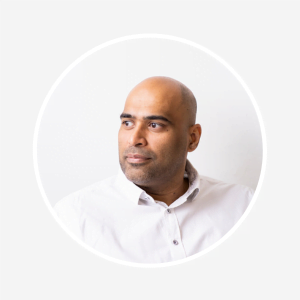Laying the Groundwork: How to Set Up a Successful Organisational Due Diligence.

SAKET BIVALKAR
Saket’s focus is on helping organisations to become flexible and adaptive, while emphasising that people in the organisation grow as well. His experience includes working with a range of organisations from large, complex global enterprises to small entrepreneurial start-ups.
Laying the Groundwork: How to Set Up for a Successful Organisational Due Diligence (ODD)
We published some time back that we are working on a Playbook for executing Organisational Due Diligence. We publish first part of the list of topics/ ideas playbook will cover in our post.
Here is second chapter of the playbook.
Chapter 2 : Preliminary Considerations of Organisational Due Diligence.
Organisational Due Diligence (ODD) doesn’t start with interviews or org charts—it starts with intention, structure, and alignment. This article outlines three foundational steps to launch a successful ODD process that supports strategic decisions in acquisitions, carve-outs, or transformations.
1. Defining the Purpose and Scope
The first and most essential task is clarifying why the due diligence is being done and how broad it should be. Organizational due diligence is a diagnostic and alignment tool, not a checklist. Its role varies depending on the business context:
Common Triggers for ODD:
-
Post-Merger Integration: Aligning structure, culture, and leadership in newly merged entities.
-
Carve-Out Preparation: Ensuring the BU is viable and coherent as a standalone entity.
-
Portfolio Additions in PE: Verifying alignment and maturity for inclusion in an existing operating model.
-
Transformation Planning: Establishing a baseline before initiating structural or cultural change.
Scope Considerations:
-
Enterprise-Wide: Suitable for full acquisitions or large-scale transformations.
-
BU-Specific: Applied during carve-outs or functional integration.
-
Thematic: Focused on leadership, decision-making, or cultural dynamics.
The purpose and scope influence every element of the due diligence—from the team you assemble to the tools you deploy.
2. Building the ODD Team
A well-composed team is your best insurance against blind spots and groupthink. A good ODD team is not just technically skilled; it’s representative, credible, and trusted.
Principles of Team Composition:
-
Internal + External: Internal members provide contextual insights; external experts offer neutrality and cross-industry experience.
-
Cross-Functional & Multi-Level: Include operational leads, HR partners, and strategy voices from different parts of the organization.
-
Trust-Driven Access: Team members must be able to access sensitive insights and create psychological safety for interviewees.
Work Chartering:
Before fieldwork begins, the team must agree on a Work Charter—a document that outlines objectives, scope, roles, and methods of working.
Skill Matrix:
A Skill and Capability Matrix helps identify gaps and clarify who brings what to the table.
Check for Skill matrix for ODD.
Check for Team Design of ODD
3. Launch and Alignment
The launch meeting is more than a calendar invite—it’s your chance to establish trust, communicate purpose, and align expectations.
Objectives of the Launch:
-
Introduce the ODD team and clarify their mandate
-
Share the purpose and scope of the process
-
Explain the methodology and stages of engagement
-
Set expectations around confidentiality, feedback, and involvement
A strong launch reduces resistance, builds cooperation, and helps position the ODD as a strategic enabler—not a compliance exercise.
Sample Communication Elements:
-
What’s happening and why
-
Who is involved and what it means for them
-
Timeline and methods of input
-
Where to go for more information
Check out Communication Plan Tempate.
Check Due Diligence process map.
Conclusion
Great due diligence doesn’t start with data—it starts with clarity, commitment, and structure. By taking time to define the purpose, build the right team, and align stakeholders early, you position the ODD to deliver more than diagnosis—you enable decision-making.
(If you want to see the structure of the Playbook check our previous post on the topic)
What Does a Good Operating Model Look Like?
Discover the key elements of a successful operating model and learn how to design one that enhances efficiency, adaptability, and customer satisfaction.
Operating Model Innovation: Reshaping Organisations for the Future of Work
Operating model innovation is crucial for organisations looking to stay competitive in today’s fast-changing business environment. By rethinking structures, integrating hybrid work principles, and leveraging freelance and fractional talent, companies can achieve greater agility, enhanced customer-centricity, and sustainable value delivery. This comprehensive guide explores strategies for HR leaders, CEOs, and transformation specialists to modernise their operating models and overcome common challenges, ensuring long-term success.
The Adaptive Operating Model: Knowledge Network Operating Model
Discover the Knowledge Network Operating Model, integrating freelancers for agile project staffing. Enhance innovation and efficiency in today’s gig economy!





